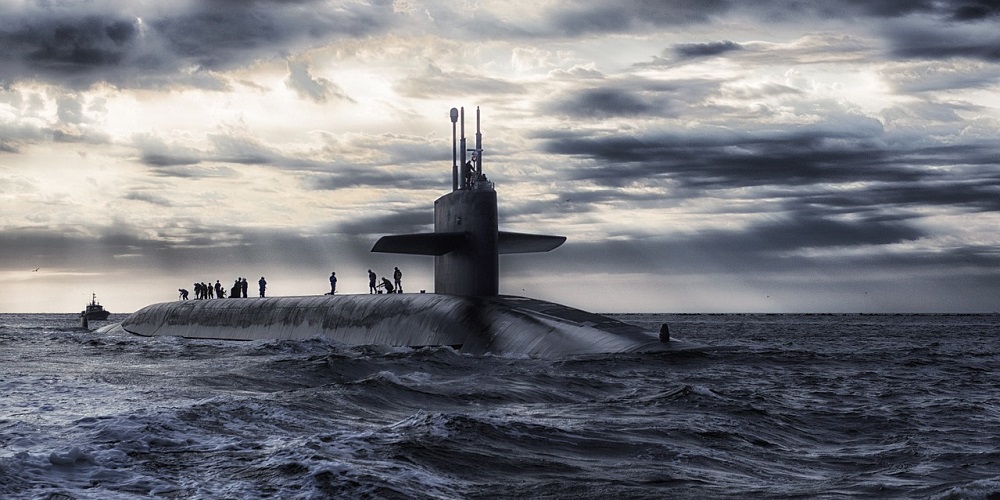Introduction:
National Submarine Day, observed annually on April 11th in the United States, pays homage to the ingenuity, bravery, and technological advancements that have defined the realm of undersea exploration and warfare. From the earliest prototypes to the cutting-edge submarines of today, this day commemorates the contributions of submarines and submariners to naval history, defense capabilities, and maritime exploration. This essay delves into the rich history of submarines, the significance of National Submarine Day, and the enduring legacy of undersea innovation in the United States.
The Evolution of Submarines:
The concept of submarines dates back centuries, with early attempts at underwater navigation dating as far back as the 16th century. However, it was not until the Industrial Revolution that submarines began to take shape as viable vessels for military and scientific purposes. The development of steam power, steel hulls, and propulsion systems paved the way for the emergence of modern submarines capable of extended underwater operations.
One of the pioneers of submarine design was David Bushnell, an American inventor who built the Turtle, the world’s first combat submarine, during the American Revolutionary War. Although the Turtle’s mission to attack British ships in New York Harbor was unsuccessful, it laid the groundwork for subsequent innovations in submarine technology.
Throughout the 19th and early 20th centuries, submarines underwent rapid evolution, transitioning from hand-cranked vessels to steam-powered and diesel-electric submarines capable of greater speed, endurance, and submerged capability. The advent of World War I saw submarines play a decisive role in naval warfare, with German U-boats conducting unrestricted submarine warfare against Allied shipping, posing a significant threat to maritime trade and military operations.
The Interwar period witnessed further advancements in submarine technology, including the development of the snorkel, which allowed submarines to operate while submerged for extended periods without the need to surface for air. World War II saw submarines once again emerge as formidable weapons of war, with both Axis and Allied powers deploying submarines in various theaters of conflict.
Postwar Innovations and Nuclear Submarines:
The end of World War II marked the beginning of a new era in submarine technology with the introduction of nuclear propulsion. In 1954, the USS Nautilus, the world’s first nuclear-powered submarine, was commissioned by the United States Navy, ushering in a revolution in undersea warfare and exploration. Nuclear propulsion provided submarines with virtually unlimited range and endurance, enabling them to travel faster and dive deeper than ever before.
The deployment of nuclear-powered submarines, such as the USS George Washington and USS Patrick Henry, played a crucial role in Cold War geopolitics, serving as platforms for strategic deterrence, intelligence gathering, and covert operations. These submarines formed the backbone of the United States’ nuclear triad, alongside strategic bombers and intercontinental ballistic missiles, ensuring the nation’s security and global influence.
In addition to their military capabilities, nuclear-powered submarines also played a vital role in scientific research and exploration. Submarines such as the USS Nautilus and USS Trieste conducted groundbreaking expeditions to the deepest parts of the ocean, unlocking the mysteries of the undersea world and expanding our understanding of marine biology, geology, and oceanography.
Modern Submarines and Future Challenges:
Today, submarines continue to serve as indispensable assets for navies around the world, providing unmatched capabilities for intelligence gathering, reconnaissance, surveillance, and deterrence. The United States Navy maintains a fleet of advanced submarines, including ballistic missile submarines (SSBNs), attack submarines (SSNs), and guided-missile submarines (SSGNs), capable of operating in diverse environments and fulfilling a range of mission objectives.
However, the undersea domain is not without its challenges and risks. Advances in anti-submarine warfare (ASW) technology, including sonar systems, unmanned underwater vehicles (UUVs), and maritime patrol aircraft, pose threats to the stealth and survivability of submarines. Moreover, the proliferation of submarines among potential adversaries, including Russia, China, and North Korea, has raised concerns about regional stability and the risk of escalation in maritime disputes.
In response to these challenges, the United States Navy continues to invest in the development of next-generation submarines equipped with advanced sensors, weapons systems, and stealth technology. The Virginia-class and Columbia-class submarines represent the pinnacle of American submarine design, incorporating state-of-the-art features to maintain superiority in undersea warfare.
Conclusion:
National Submarine Day serves as a poignant reminder of the profound impact that submarines and submariners have had on naval history, defense capabilities, and maritime exploration. From the humble beginnings of David Bushnell’s Turtle to the nuclear-powered behemoths of the modern era, submarines embody the spirit of innovation, perseverance, and courage.
As we commemorate National Submarine Day, let us honor the contributions of submariners past and present, whose dedication and sacrifice have safeguarded the freedoms and security of nations. May we continue to support the advancement of undersea technology and exploration, ensuring that submarines remain at the forefront of maritime power and scientific discovery for generations to come.






